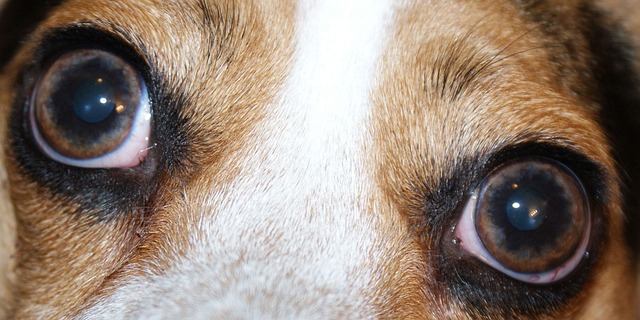Eye boogers generally refer to a buildup of mucus in the eyes. While blinking the eyes, the eye flushes out the secretions of rheum, a watery fluid. The mucus generally accumulated in most quantity while sleeping.
Mucus helps protect the eyes from dirt, chemicals, soil, and other foreign agents. Eye boogers are generally harmless, however, in some cases, the discharge of eye booger may exceed and cause problems in pets.

Allergies
Dogs may experience allergy of grass, pollen, dust, pollen and other antibodies that lead to a physical reaction like eye discharge. Some breeds are particularly prone to allergies namely terriers, setters, retrievers, and flat-faced dogs like bulldogs, pugs, and Boston terriers. Some of the common symptoms of dogs experiencing allergies are:
- Itchy and runny eyes
- Irritated skin
- Excessive scratching
- Pawing at eyes
Conjunctivitis
Conjunctivitis is an inflammation or swelling of the conjunctiva. It’s also known as ‘the pink eye’. The conjunctiva is a thin transparent layer of tissue that sits on the inner surface of the eyelid. You should get your dog checked with the Vet immediately if you notice pus-like eye boogers and excessive redness in and around the eye. Conjunctivitis can be troublesome for pets as they often paw their eyes due to irritation. Pet’s conjunctivitis is transmittable to humans too.
Epiphora
Epiphora is the excessive watering of the eye. It’s common for eyes to produce water, however, it can be a problem if they start producing excessive water. Signs of Epiphora are excess wetness around the eyes, brown stains underneath the eyes, a smelly odor, and skin irritation. This condition is more noticeable in breeds with lighter fur. You should consider visiting the Vet if you notice any such condition.
Keratoconjunctivitis Sicca (KCS)
Keratoconjunctivitis Sicca is also known as the Dry eye disease (DED) or the Dry eye syndrome (DES). It is a multifactorial disease of the tears and the ocular surface that results in discomfort, visual disturbance, and tear film instability with potential damage to the ocular surface. KCS occurs when the tear gland gets infected or when it experiences trauma. Some of the common symptoms of KCS are yellowish discharge, inflammation around the eye, excessive blinking or swelling of the eyelids. It may also lead to corneal disease or damage if not treated soon.
Glaucoma
The increased pressure, called intraocular pressure, can damage the optic nerve. The optic nerve helps to transmit images to the brain. If the damage continues, glaucoma can lead to permanent vision loss. Some dog breeds are more prone to Glaucoma such as Poodles, Chow Chows, and Cocker Spaniels. Glaucoma is also common in senior or the aging dogs.
There are two types of glaucoma in dogs. Primary glaucoma is when the eye is unable to drain, causing fluid to build up inside the eye. Secondary glaucoma is caused when the eye is impacted by trauma (such as inflammation or cancer), which physically blocks drainage.
Eye boogers in common conditions are usual, however, daily cleaning of the eyes is essential to keep your pet’s health in check. Most ailments in pets occur when the initial problems aren’t corrected on time.